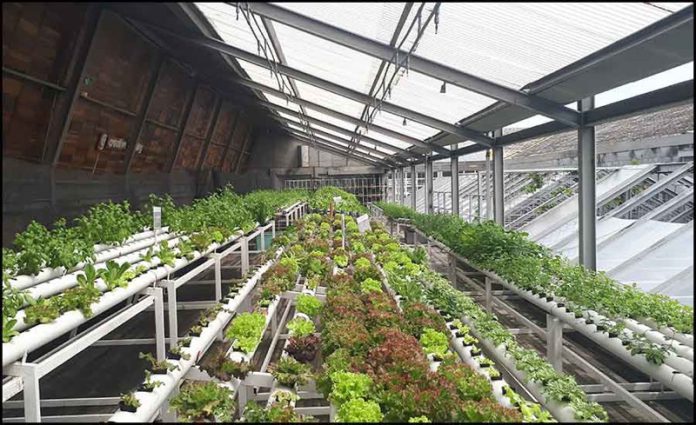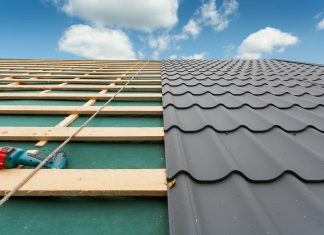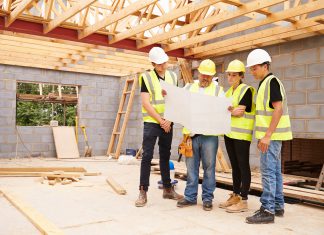Growing cannabis at home can be an incredibly profitable venture, provided you have the right environment for the job. If you’ve just obtained a license for growing cannabis, you’ll need to set up either a grow room or a cannabis greenhouse to ensure that your plants flourish. While you can usually build a grow room by yourself, you may instead want to work with grow room construction contractors to ensure the continuing success of your crop for years to come. Professional grow room installation services keep your cannabis healthy and hydrated, which will increase your profits as you continue to move forward with your grow operation.
Creating the ideal grow room means setting up a cultivation space that follows basic scientific design principles that make it easy to pay close attention to the status of your crops. In this article, we’ll look at some of the grow room solutions you can integrate into your space to increase the health of your plants and optimize crop yields. You might be surprised at the level of impact some of the smaller changes can have on your space and your profit margins.
Grow Room Lights
Setting up the right lighting conditions in your cannabis grow room is essential to boosting plant health and increasing the extent of your yields. Cannabis plants require considerable amounts of light, whether you’re growing it indoors or outdoors. Most recommendations are to have your grow room lights on for 18 hours at a time each day to ensure that the plants are absorbing the nutrients they need while they’re in a vegetative state.
Usually, you won’t want to go over 18 hours of lighting for cannabis plants because you’ll stop the plant from operating on a normal day/night cycle. However, less light will often reduce growth potential, extending what is essentially the plant’s sleep cycle. No matter which way you choose to set up the lighting for your plants, you’ll need to make sure that your plants have consistent, schedule-based lighting, so they can respond to it as though it’s a part of a typical day and night cycle.
Light Deprivation
When you’re growing cannabis plants indoors, the process of creating a blackout environment is just as important as creating artificial light. When the cannabis reaches its flowering state and is almost ready for harvesting, you’ll need a blackout curtain or tarp that envelopes the entire space. Timing is critical when creating this artificial darkness- if you deprive the area of light too early or too late, you’ll accidentally decrease the crop yield.
The ideal cannabis greenhouse or grow room makes setting up light deprivation for isolated zones easy so that one section of your plants can trigger a flowering response for harvest while the other portion of your plants continues to grow normally, in a vegetative state. When it comes to growing cannabis at home, the right lighting spectrum is key to success.
Temperature & Humidity Controls
Cannabis grow rooms and greenhouse spaces should be slightly above room temperature at almost all times. If the grow room is too cold, it will alter growth patterns and potentially wilt the plants as they adapt to what’s essentially a less relaxed environment for them. If the grow room is too hot, the plants will have a tough time maintaining proper hydration levels, which can also alter the success of the crops.
In the ideal cannabis grow room, the room’s temperature is self-regulated by a machine or device separate from your home’s standard heating and cooling systems. To ensure that the space stays at the proper temperature, installing insulation for the space is vital. Insulated metal wall panels are often the best solution for keeping your plants in an optimal environment. They also help keep the room at optimal humidity levels, which is usually somewhere between 40 and 50% for a flowering crop.
Maximizing Space
One of the challenges you’ll face in growing cannabis at home is finding the space for plants as they continue to multiply. Vertical grow racks and other stacked planting solutions are a good option for many growers, though you’ll often need to set up the lighting and temperature controls of the space to accommodate for this type of planting. Most vertical grow racks are made from durable, water-resistant steel or metal to ensure that they continue to support the grower for many planting and harvesting seasons to come. Tabletop caster units are a solid choice for grow rooms without enough space for full-scale vertical planting equipment, as are mobile carriages and other shelving solutions.
Air Circulation & Ventilation Concerns
The air in your grow room should never be stagnant, or your plants likely won’t get the CO2 they need for success. Unfortunately, many growers that plant everything indoors have a tough time keeping the air in their space fresh, which can lead to wasted crops if they aren’t careful. You’ll usually need industrial-level fans and ventilation systems for the space that work in sync with your temperature and humidity controls. When the plants begin to flower, they also create a powerful odor that it’s critical you mitigate before it affects the rest of your home.
Optimizing CO2 Levels
CO2 generation is a critical process in growing cannabis plants that effectively increases the health of the plant’s stalk and leaves when it’s in a vegetative state, which then leads to an increase in crop yield down the road. A CO2 generator is a common solution to this problem for many growers, as are CO2 enrichment systems and liquid CO2 dispensing solutions. The right CO2 solution for your grow room or greenhouse largely depends on the size of the space.
Keep it Clean
To maintain an optimal cannabis greenhouse, you should keep the entire space as clean as possible to reduce mildew and increase the efficiency of your ventilation and humidity control systems. It’s a simple yet often overlooked method for making the maintenance of your plants a simple process, ultimately increasing your crop yields and resulting profits.













